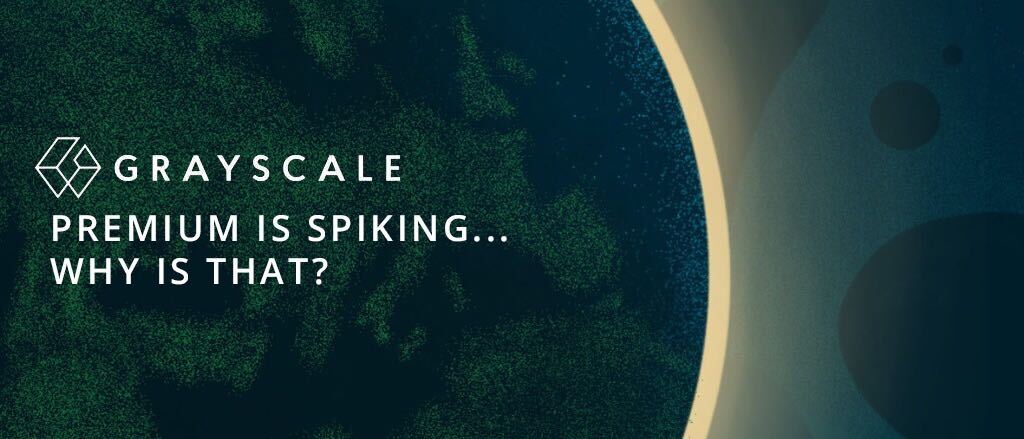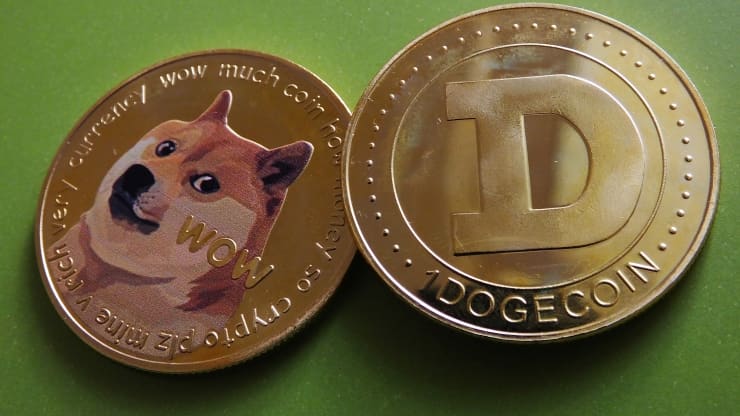- Grayscale is the biggest bitcoin and cryptocurrency asset management company in the world, which currently holds assets worth more than $6 billion with its valuation up by nearly 40%.
- After the recent official launch of Grayscale’s two Bitcoin funds: Litecoin Trust (LTCN) and a Bitcoin Cash Trust (BCHG) have seen a stunning 1,000% premium spike.
- Exorbitant premiums of Grayscale bitcoins indicate that the retail demand for Bitcoin is high, and the market is set for ETFs.
Photo Credit – Clifford Photography (Source: unsplash.com)
Why is Grayscale Trending?
Grayscale is the primary bitcoin and crypto asset management company and has the most prominent digital investment products.
The company is based in New York, owned by Barry Silbert. Grayscale is part of the venture capital company, Digital Currency Group, which currently holds Assets under Management (AuM) surpassing worth $6 billion.
The valuation of the group’s assets has been up by nearly 40 percent according to the latest quarterly report that came out in June. The major driving factor for this upswing has been the huge success of Bitcoin Trust, Grayscale’s flagship product.
Grayscale Product Offering Price (Source: grayscale.co)
The two cryptocurrency funds of the company, Bitcoin Trust (GBTC) and Ethereum Trust (ETHE) have become the indicator of the bitcoin market performance.
A research report by Arcane Research came out in August 2020, shows that there has been a huge demand for these publicly traded crypto trusts that Grayscale recently launched.
Grayscale Bitcoin Trust (GBTC)
The Grayscale Bitcoin Trust or GBTC, Grayscale’s publicly traded shares, which have gone past $5 billion in AuM.
GBTC are currently trading at a 23 percent premium compared to the net asset value (NAV). Since January 2019, the GBTC have been trading at a premium ranging from 7 to 40 percent.
Grayscale Bitcoin Trust Price Trend (Source: Arcane Research)
Later, GBTC’s premium to net asset value (NAV) dipped sharply in the first half of 2020, falling from 40 percent to low 20s nearly to the end of the first quarter. Again, in the late second quarter, GBTC’s premium dipped from 20 percent to 10 percent level and below.
The latest GBTC premium seems to have declined further compared with the year-to-date (YTD) average of 18.4 percent. As of now, GBTC’s highest YTD premium has been 41.4 percent and the lowest is 3 percent.
Also, the historical average premium of GBTC has been 39 percent, and the highest recorded premium was 132.6 percent and the lowest was -0.3 percent.
Grayscale Ethereum Trust (ETHE)
The Grayscale Ethereum Trust (ETHE) stands at $837 million net worth of AuM. Currently, ETHE stocks are trading at a premium of 93.7 percent compared to the NAV.
In June 2020, the premium spiked more than 800 percent. The premium normalized later, but it is still significantly high.
Grayscale Ethereum Trust Price Trend (Source: Arcane Research)
As of now, ETHE have witnessed a promising rise in its premium by going up by more than 300 percent YTD.
ETHE premium remained high throughout the most part of H1, fluctuating in the range of 400+ percent from March to June.
The historical data of ETHE shows that the premium of 948.9 percent in early June was distinct. If we consider it as a benchmark, ETHE’s historical average premium has been 203.5 percent.
Launch of Litecoin Trust (LTCN) and Bitcoin Cash Trust (BCHG)
On August 18, 2020, Grayscale officially launched Litecoin Trust (LTCN) and Bitcoin Cash Trust (BCHG), the company’s two new cryptocurrency funds.
After the trusts obtained DTC eligibility, LTCN shares have seen a spike and selling for a massive premium. At one point, the LTCN funds were trading at more than 1200 percent premium for a brief period on the base Litecoin price.
LTCN Premium to NAV (Source: Arcane Research)
Later, the wild spike of LTCN came down to a premium of 753 percent, which is still significantly high. The increasing retail demand for LTC has generated attractive returns for early investors.
Besides, another Grayscale product Bitcoin Cash Trust (BCHG) also traded at a high premium. Currently, the premium of BCGH stands at 351 percent.
BCHG Premium to NAV (Source: Arcane Research)
The declining premium of BCHG since its launch shows that the stock’s retail demand is not as strong as for LTCN.
What Are the Reasons for Grayscale’s Premium Spike?
The massive spikes in LTCN and BCHG premium have sparked speculations that many investors might not be aware that they have been paying substantially higher than the token’s market rates.
In fact, such whopping premium spikes are causing doubts about whether the cryptocurrency market has actually matured since the boom and bust of bitcoin in 2017.
Grayscale offers a range of publicly traded trusts, and the company sells these trusts in the secondary market at high premiums compared to the NAV.
All these trusts solely base on single assets and are not likely to outperform their underlying asset. The surplus return should be arbitraged. However, that is not happening.
The reasons that are driving the Grayscale premium spike are below:
1. Investors are purchasing stocks directly into the trust, seeking compensation for the lockup period.
2. The lack of crypto ETFs is forcing investors to get access to crypto exposure through their 401(k) savings.
3. Investors may not be aware of the actual premium.
According to experts, the overall premiums of the Grayscale products are much higher than what they should be when considering the lockup compensation.
Before We Go
Photo Credit – Icons8 Team (Source: unsplash.com)
The bottom line is that the cryptocurrency development trends show that there is a high retail demand for bitcoin, and the market is ready for ETFs.
The institutional adoption of the cryptocurrency market is also increasing. Recently, Fidelity Investments filed a request to the US Securities and Exchange Commission (SEC) for a Bitcoin fund. In another instance, MicroStrategy purchased Bitcoin worth $250 million.
All these institutional demands, increasing trading activity, and higher mainstream awareness is likely to boost BTC in 2021 and beyond.











